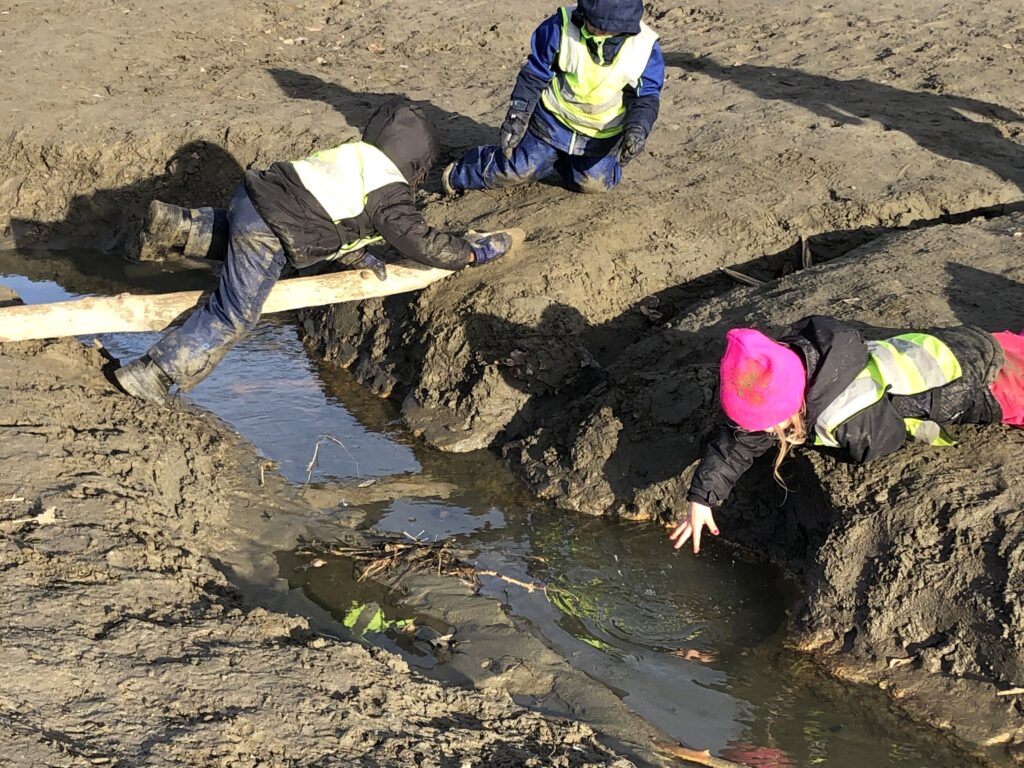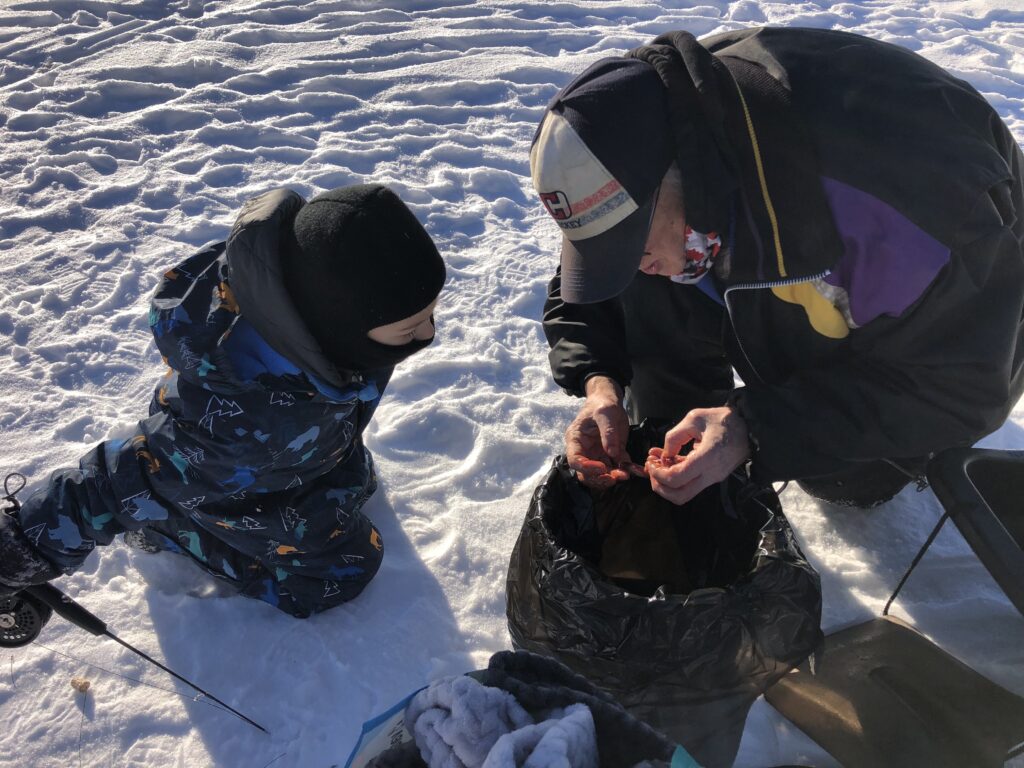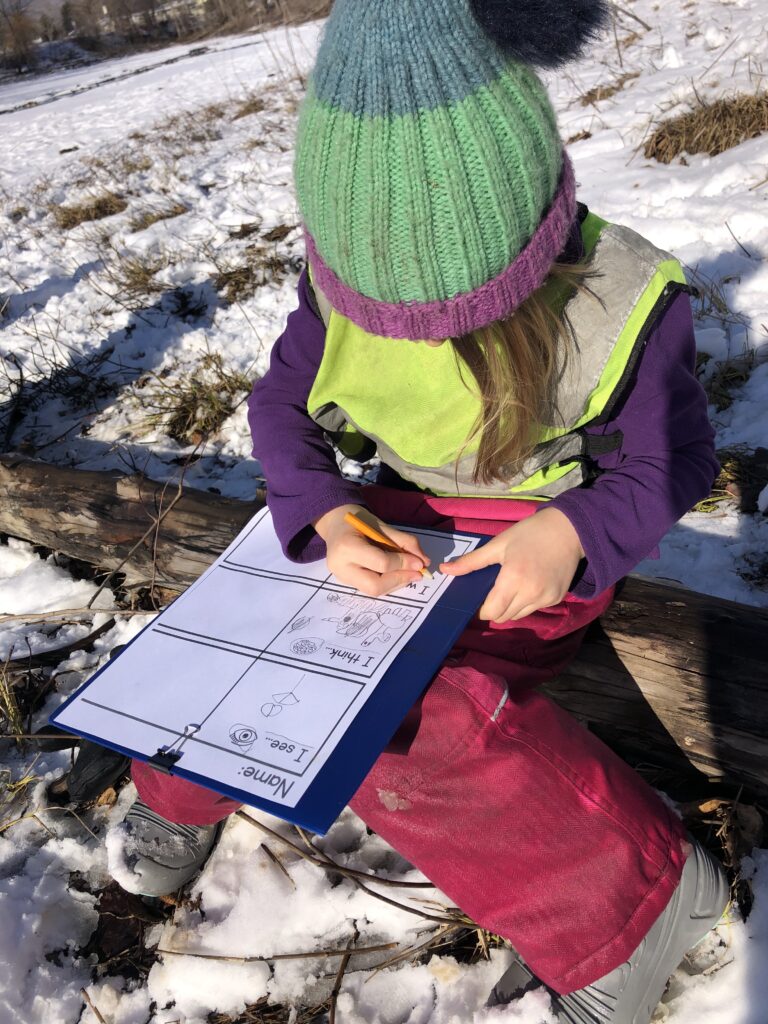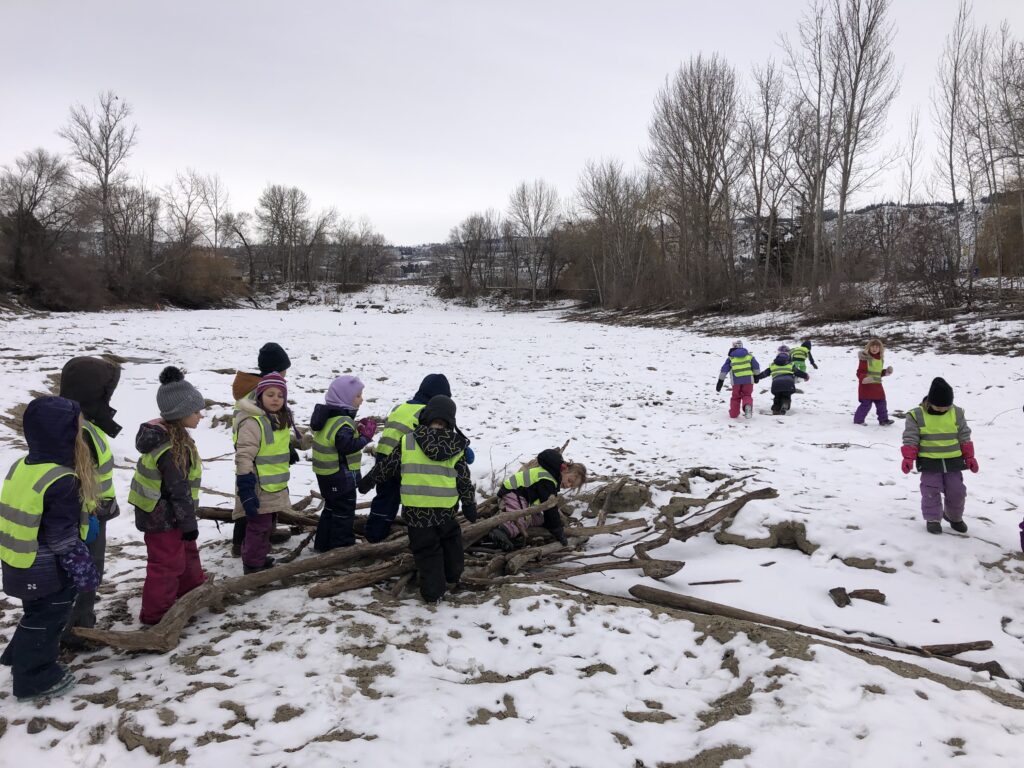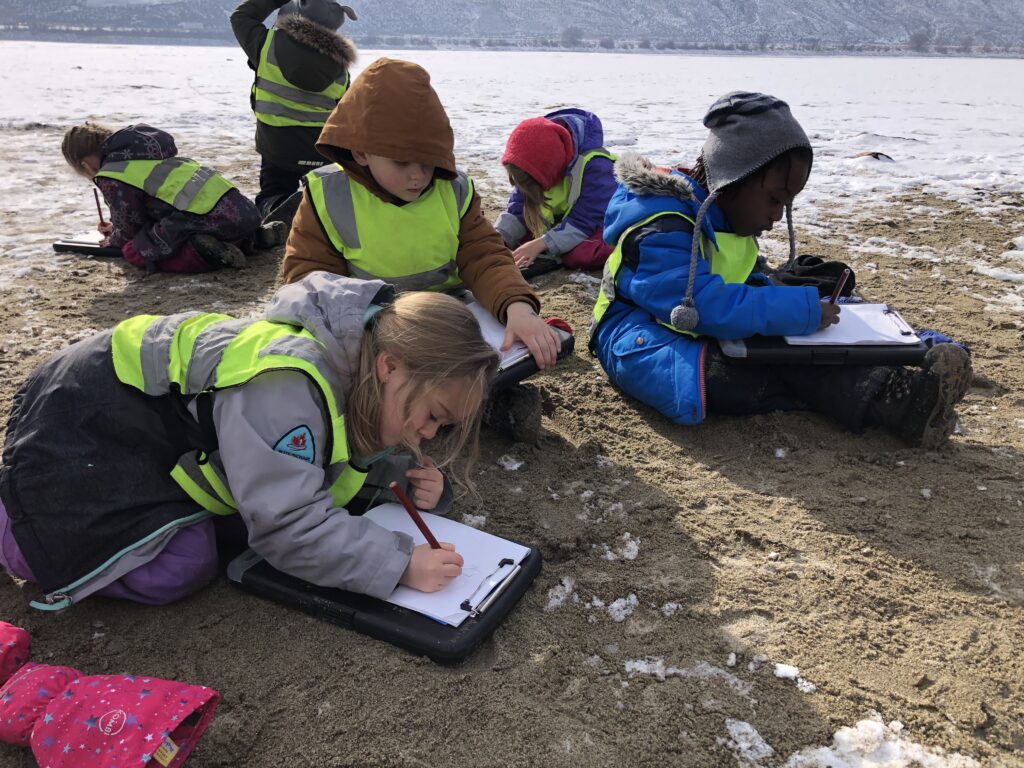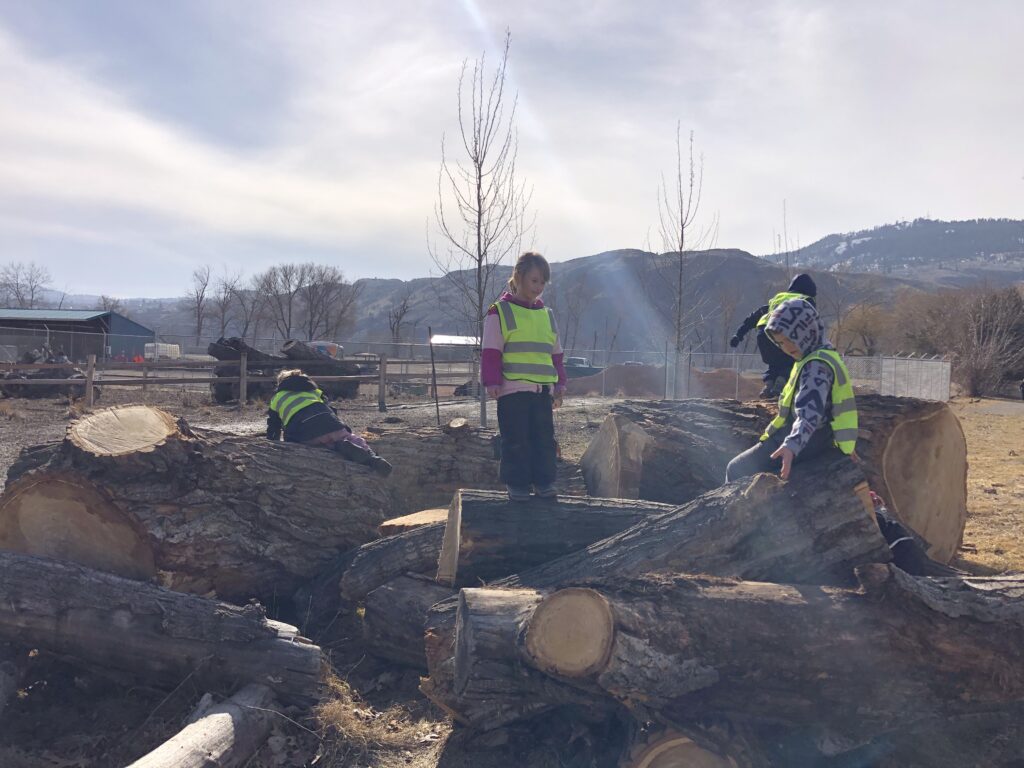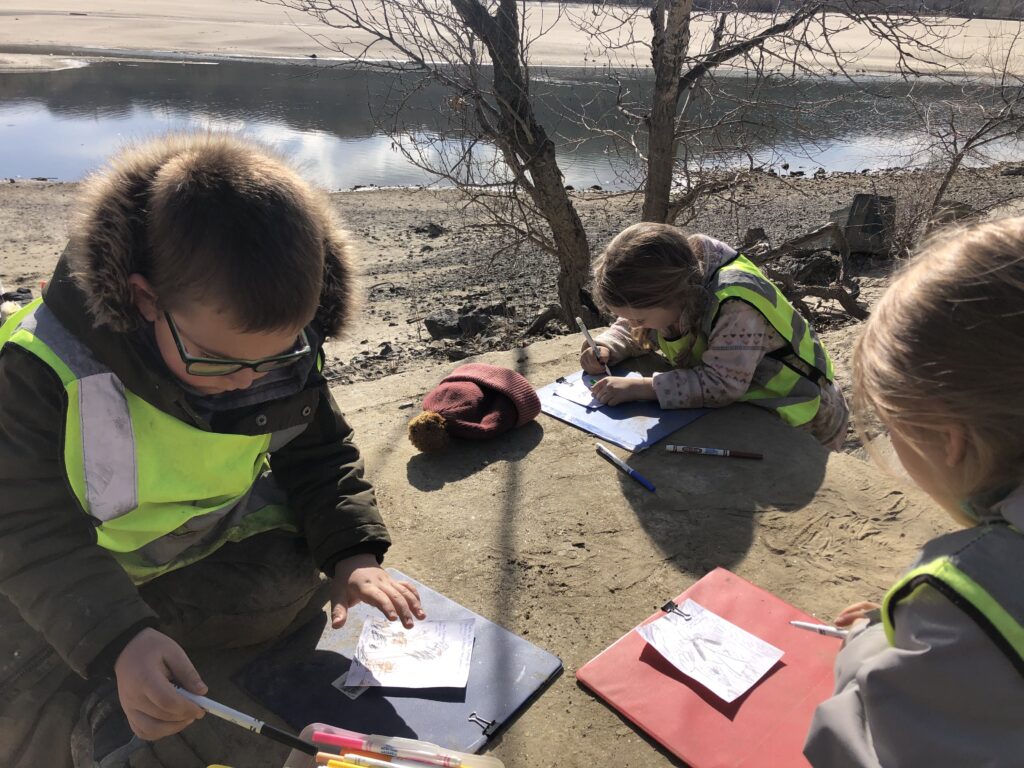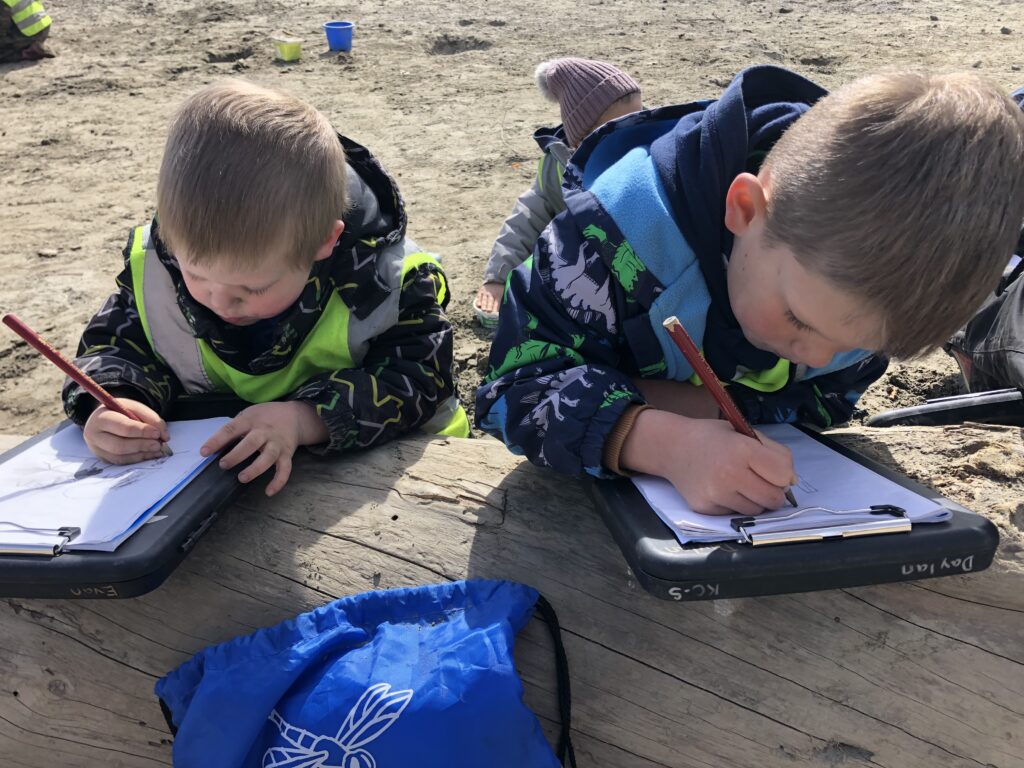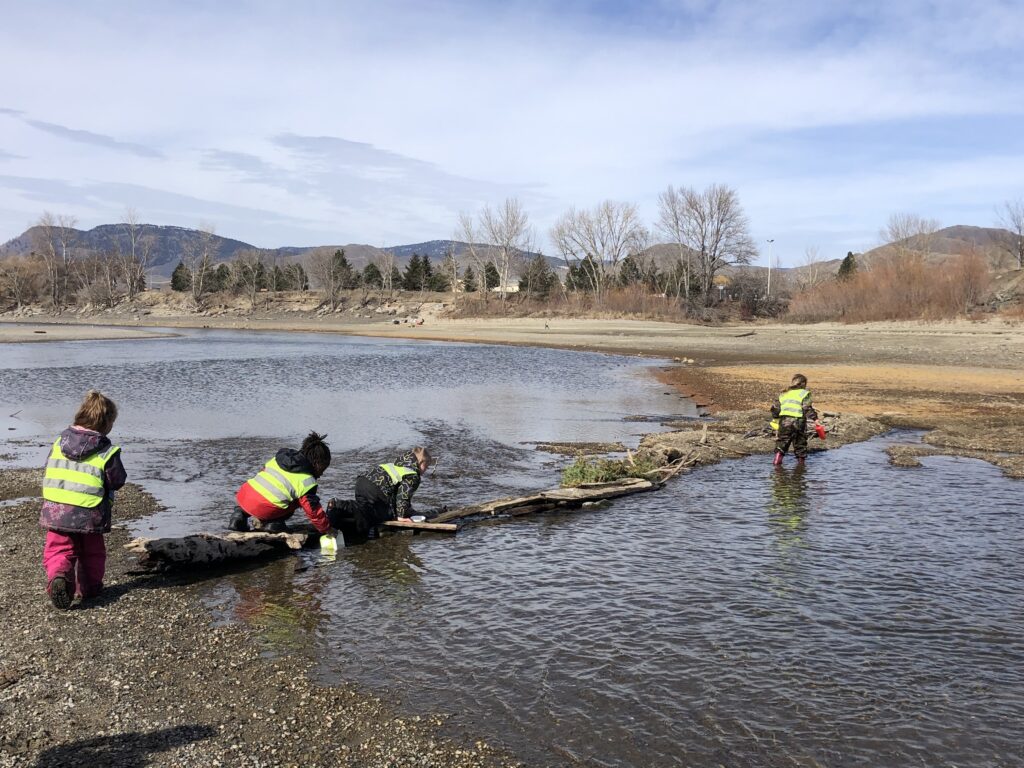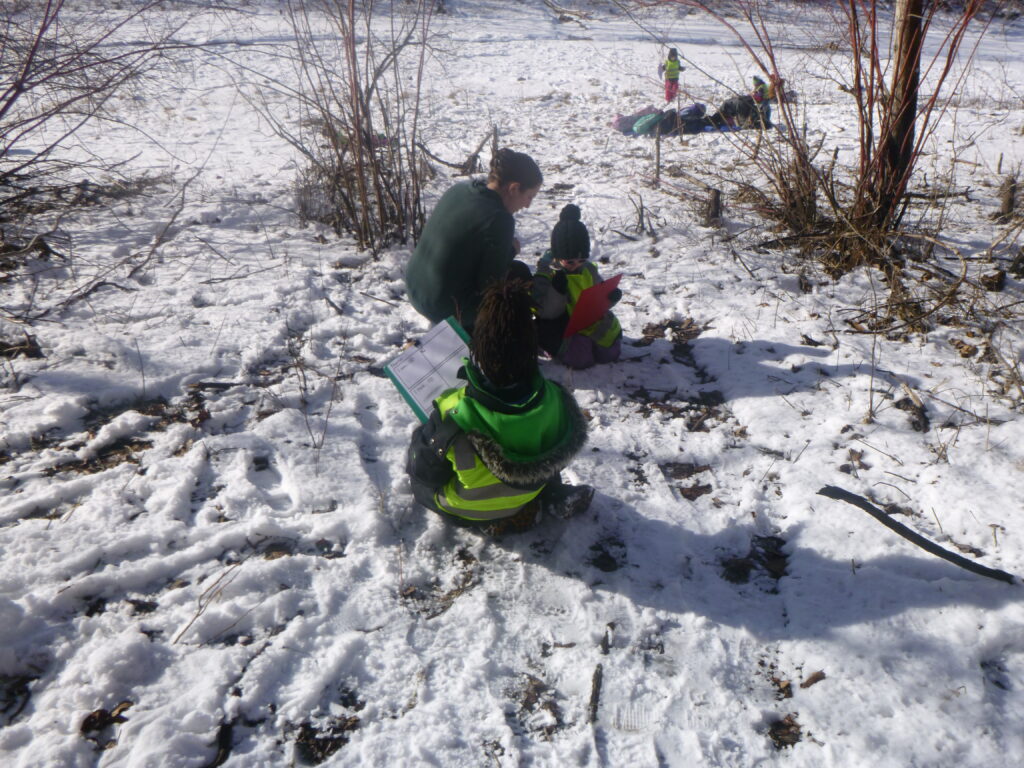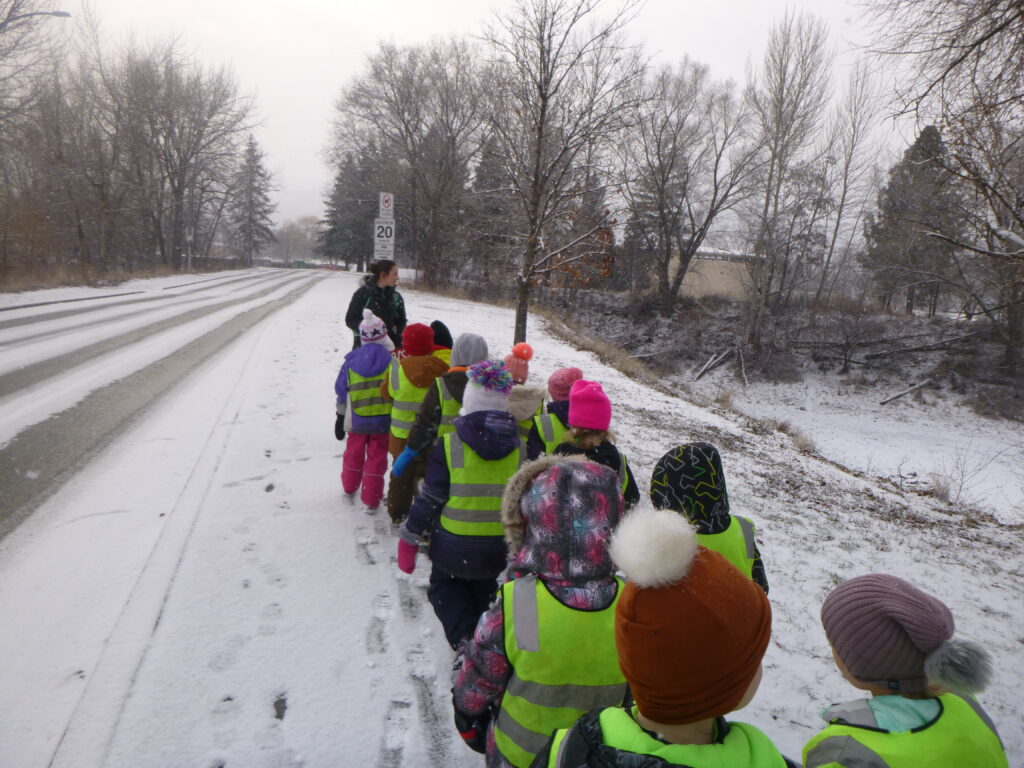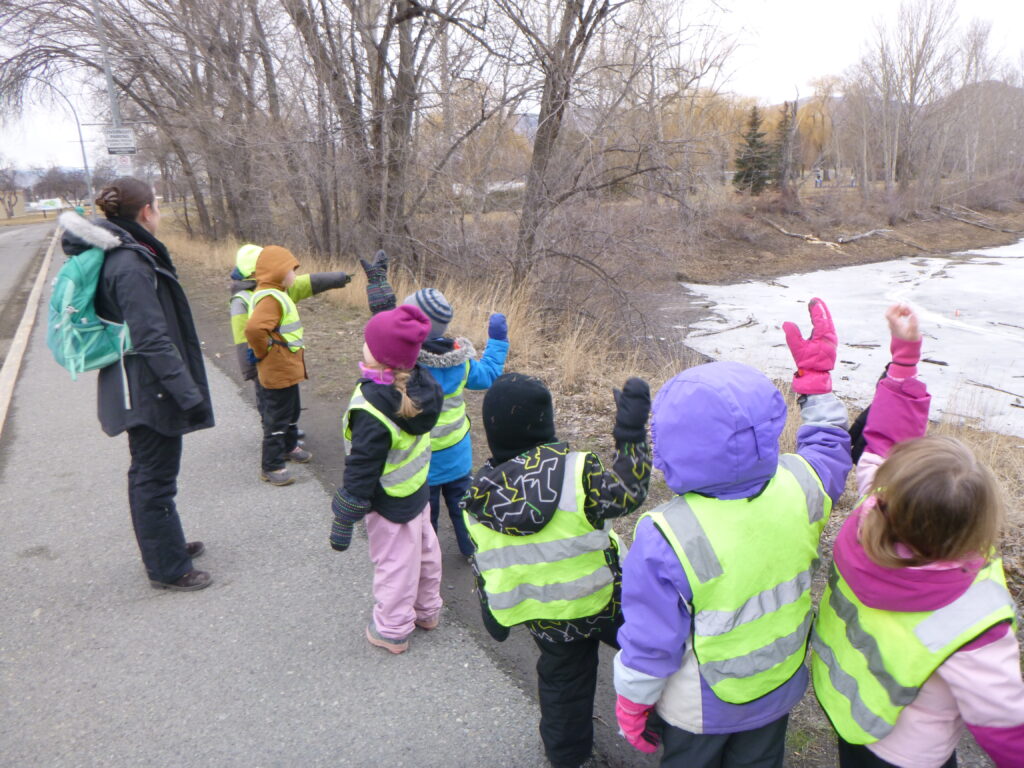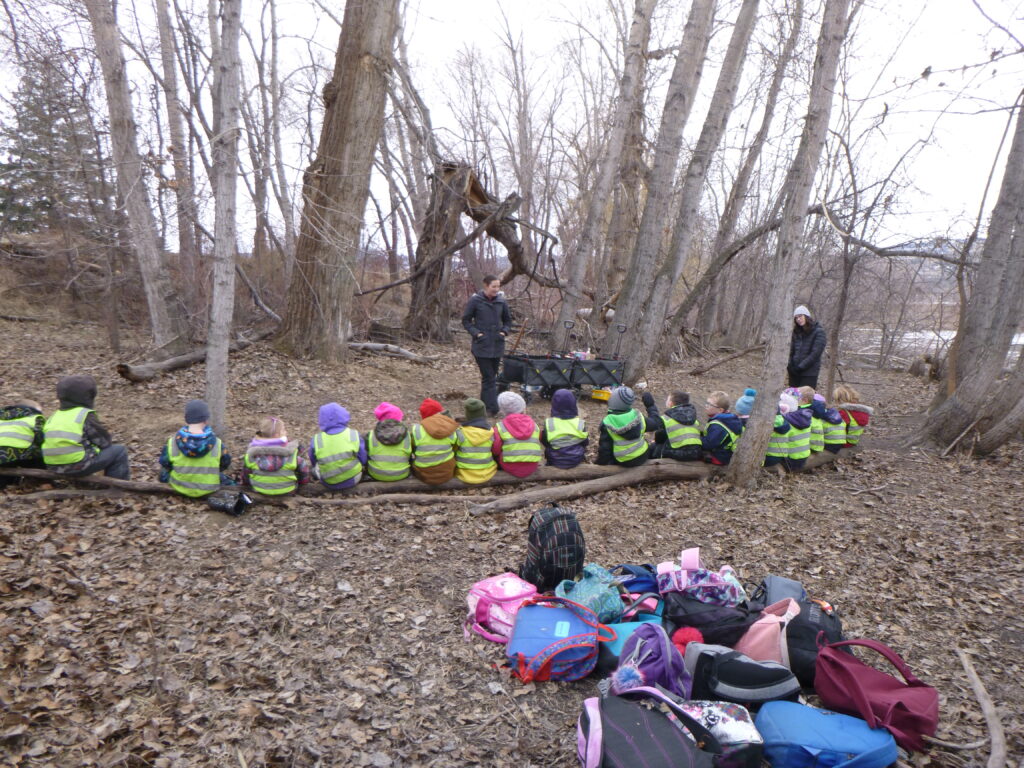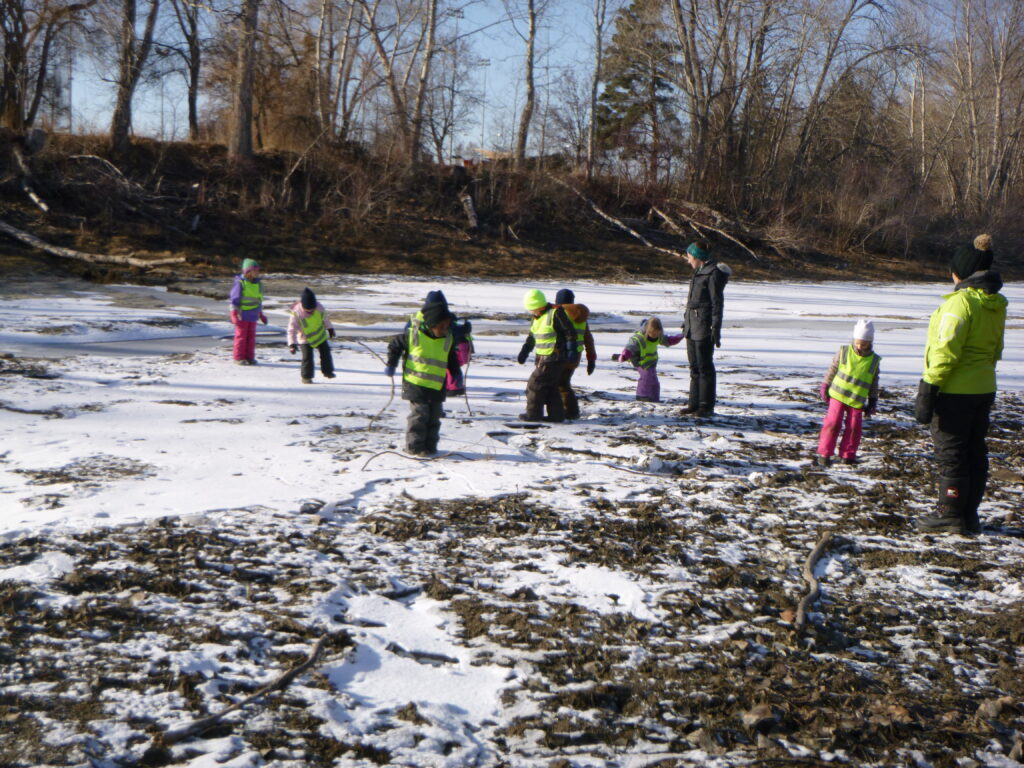This journal reflection was submitted as part of my reflections for my certification practicum during the winter of 2021.
I am aware that I have a unique opportunity with my practicum placement to experience both outdoor and indoor education. Alongside these different forms of education, I have the opportunity to work with the outdoor and indoor classroom teachers for the group of students I am working with. Accompanying this is collaboration, conversation, and “double days” (days/experiences with both Kindergarten classes) with the second indoor Kindergarten teacher. It has been excellent.
Outdoor education. I entered into this placement with the experience that when students and teachers are outdoors, learning opportunities happen. Sometimes planned and directed by the teacher but frequently taking place because of the engagement students have with one another, the teacher, and the learning that nature holds for us. During my second week of teaching, I taught a PE class outdoors (all of the PE classes have been outdoors!); on this particular day, the free play in the Exploration Zone (the beach) had the students running and jumping across the small creek, over and over and over again. There was trial and error as they moved to different areas of the creek, and they ran and jumped from different distances from the creek. I did not set this learning experience up, nor did I recommend we all start running and jumping over the creek – the students entered into this as they explored their space. And I was amazed. Sure, I had taught a PE lesson before this moment with learning outcomes, but the learning that took place as the students freely explored allowed me, as a teacher, to observe their learning, their practicing, their development of skill, their awareness and safety, and I was able to enter in alongside them to talk with them about how jumping felt and whether it was different depending on how far back they started running. The learning took place alongside them, observing and talking about their experiences without me directing them step-by-step.
This past week, we had a “double day” Ice Fishing trip on Thursday. With 21 kindergarten students, a handful of parents, the perfect weather, and a few fishing experts to guide us, we spent the whole day at Walloper Lake. The day was filled with students’ squeals as they pulled in fish and the disappointment of others who didn’t. I saw the students encourage one another, practice patience (and a lack of at times!), carry newly caught fish around so friends could take a closer look, and kneel in close as their fish was gutted and prepared to journey home with them. This is learning outside of the classroom: science, physical education, career, and various Core Competencies.
The very next day was an outdoor day filled with an afternoon at an Exploration Zone that had both forest and an area of frozen mud and water along a shallow creek. We changed locations because it looked like it might be a good day for exploring ice. I adapted my PE lesson for the change in areas. Once the students started their free exploration time, it no longer made any sense to interrupt it. But upon reflection, I don’t think that PE was “given up,” the physical literacy that took place was, again, beyond what I could have ” taught” in my lesson that was focused on a “minor game.” The students were experiencing running on ice, practicing balance on the ice, and engaging in heavy lifting as they moved various pieces of ice. They engaged in manipulative skills, including throwing/dropping as they were trying to break the ice, and with the support of sticks, they were striking the ice with the same goal. Without knowing it, these students engage in physical education for over an hour as they also engage in movement skills and physical literacy. Amid this activity, the students stacked and arranged pieces of ice to build an “ice town” at their initiative. I observed which students took the leadership role, how they interacted and supported one another, and an absolute generosity in kindness and manners, which I hadn’t seen so beautifully with this group yet. As I asked about different parts of the “ice town,” I learned where the hospital, hot tub, and boat areas were. All of a sudden the physically literacy that was taking place was being met with areas of the English Language Arts and Social Studies curriculum.
As I begin to enter more into outdoor learning, I am beginning to see how to inquire with students without taking over, how to plan for extensions of learning from what they are experiencing, how to guide students into potential learning moments, and how to document all of this wonderful learning. This is in progress, and there is more to unpack and practice – but the connections are happening, and I am finding myself more and more able to see the learning that is taking place while we are outside. I also acknowledge that not every day is like these days described in this reflection; certain days need more teacher-led/guided learning and other times where direct teaching and instruction are required.
End of practicum reflection
In the weeks that followed the above reflection I experiences and became more confident with teaching outdoors both in allowing learning to take place naturally and in direct teaching. Students completed pages in their senses book where they reflected on what they heard, smelled, touched, and saw. They completed Wonder Walk journal entries, created with the elements of nature that surrounded them at other times with loose parts that were brought with us. They had opportunities for hands-on-learning, “book work”, art, significant physical literacy, learned about community helpers as we crossed paths, engaged in imaginative play, tested their own boundaries and fears, and celebrated their progress and success.
While I may not always have the opportunity to teach in an outdoor program, I can see the benefits and possibilities of incorporating outdoor education into our current education structures and classrooms. I commit to working to find outdoor learning locations for my students; whether it is in the schoolyard, at a neighbouring park, or at a location that we spend our school day at once a month. The benefits of teaching and learning outdoors make the effort required to make it happen worth it. I was able to see how some students struggled emotionally indoors but once we were outdoors could do the same task without anxiety and tears. The smiles and joy on each of the students faces as they discovered and learned amazed me and inspired me.

